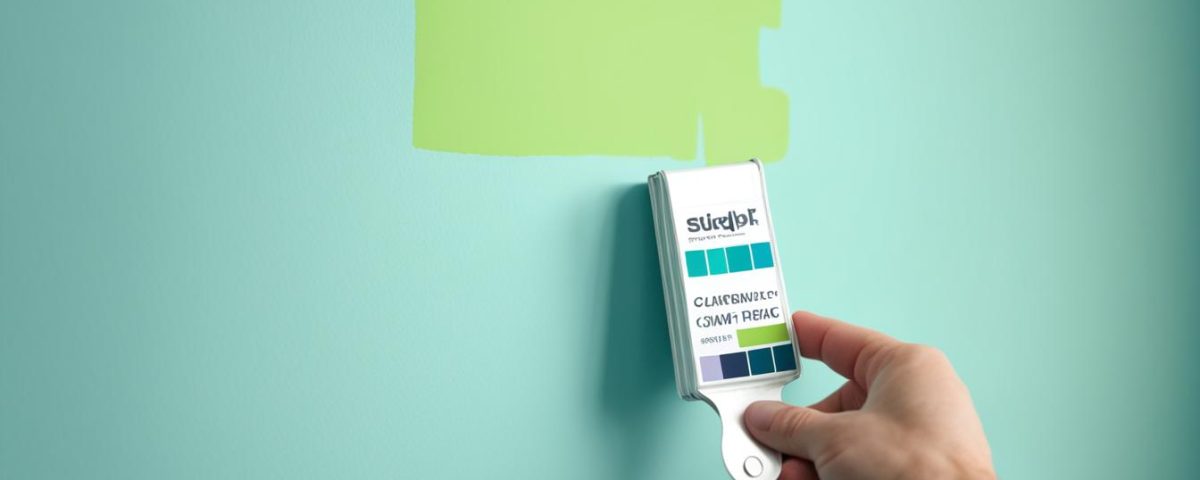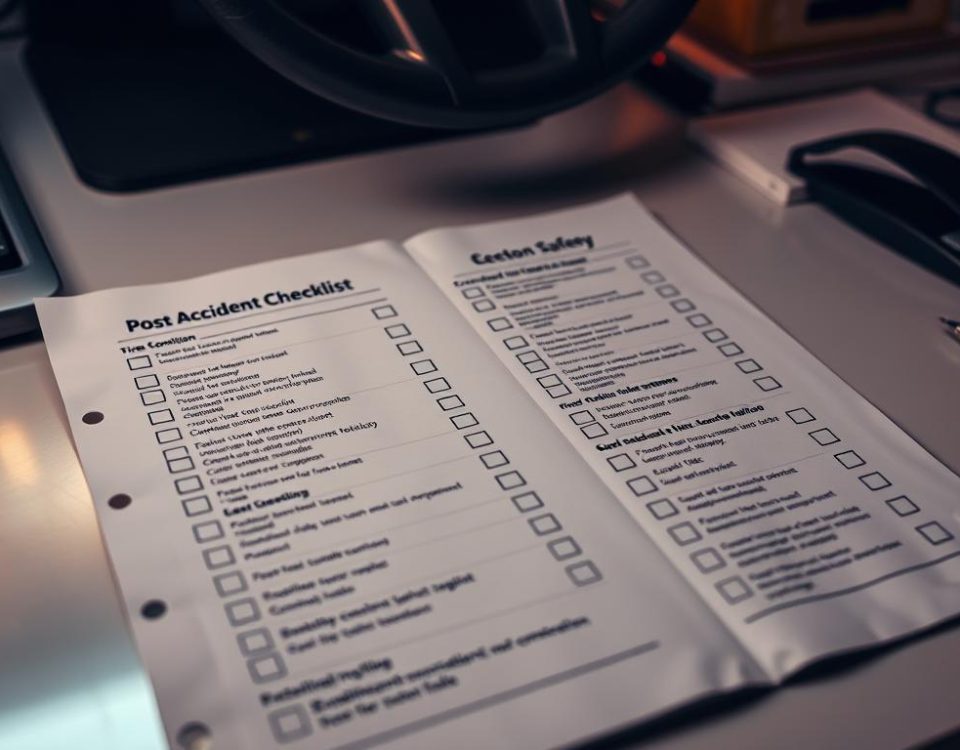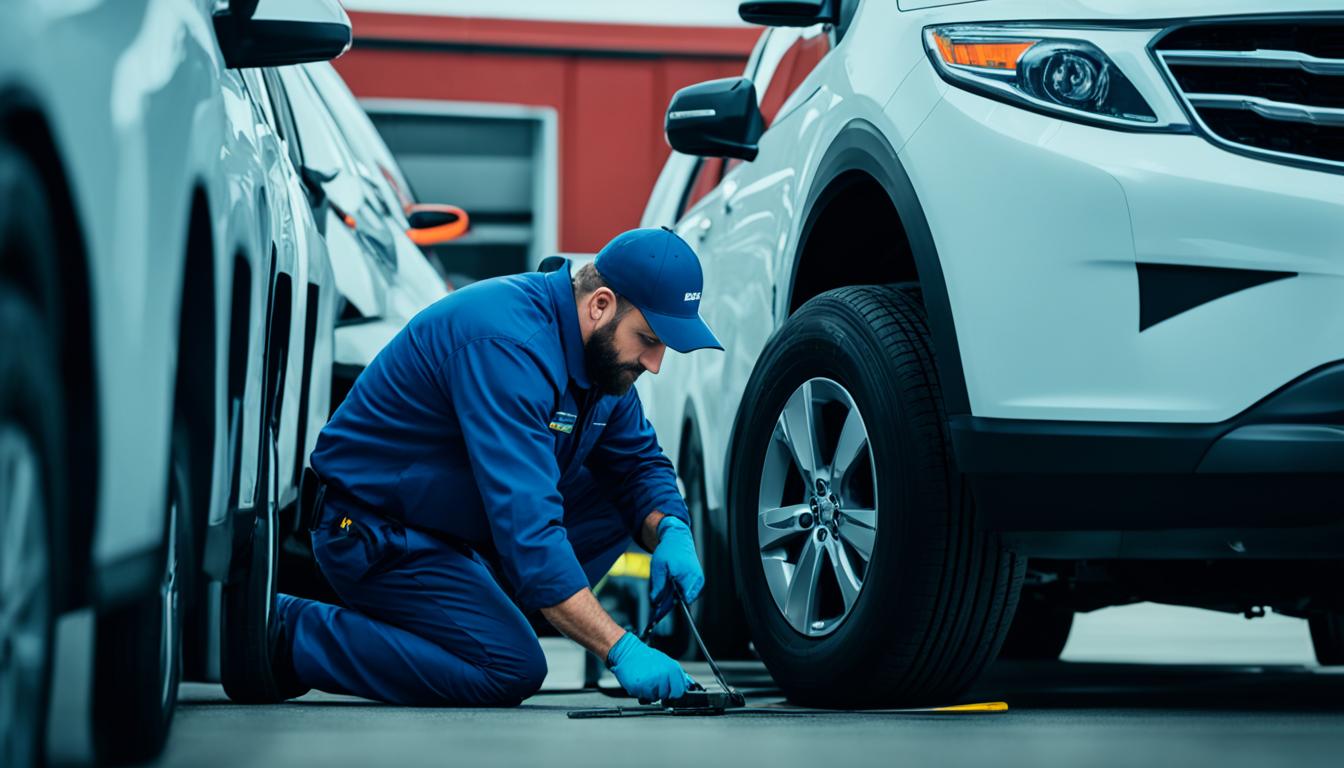
The Importance of Regular Vehicle Inspections for Fleet Owners
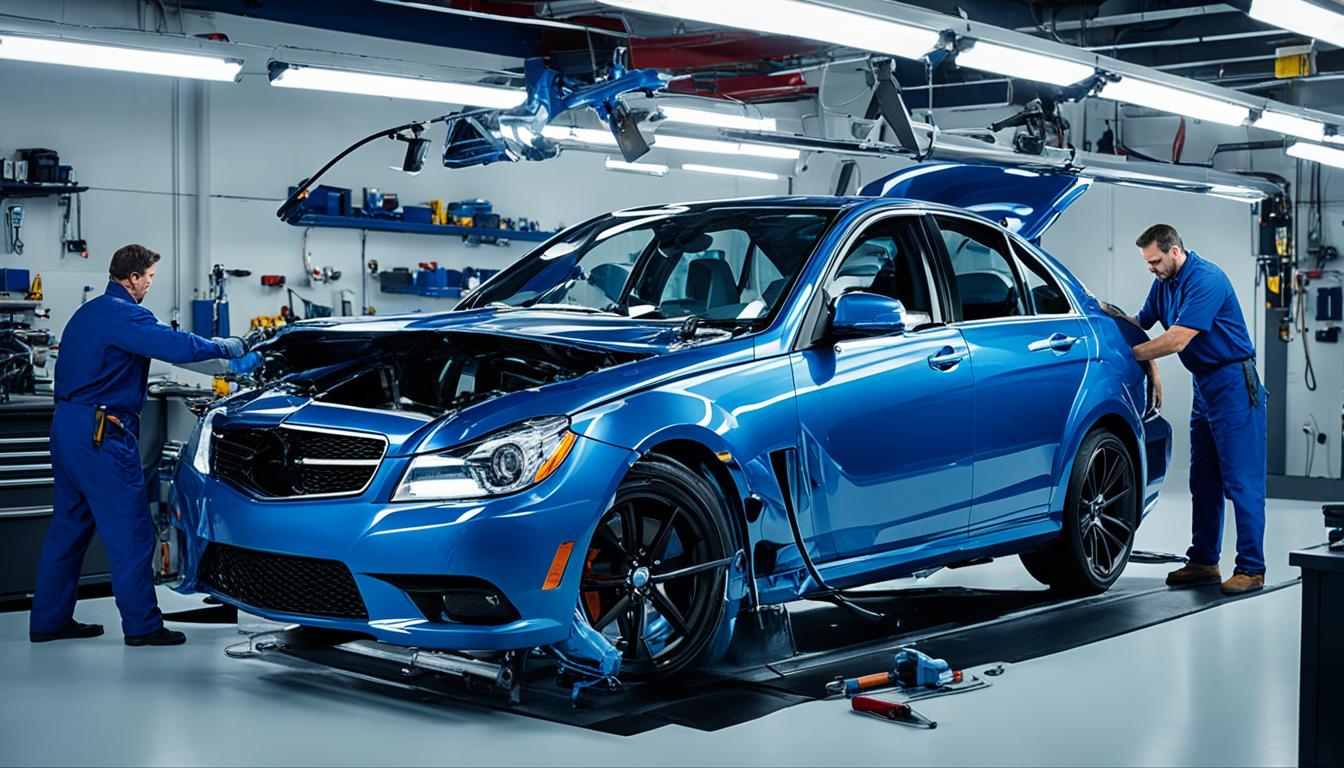
The Benefits of Using OEM Parts for Collision Repair
Choosing the right paint color for your car after a repair is key. You must match the new paint with the old to create a seamless color match. Sometimes, you have to take off undamaged parts, like the front door, to get a uniform look.
Colors and paints fade differently over time. Seeking advice from a paint expert is wise. They can guide you through the process. Remember, even factory colors may not always match. Having a sharp eye for color is vital. You’d want the painting job after an accident to be spot on. Paint shops usually prepare their paint. They do this to match the car’s color more precisely with what it looked like before the damage. Careful paint blending is crucial to avoid jarring color differences. It’s what leads to a more aesthetically pleasing result.
Key Takeaways:
- Choose the paint color that blends seamlessly with the existing paint job.
- Consider removing undamaged panels to achieve a visually consistent look.
- Consult with a paint expert to make an informed decision.
- Be aware that even factory colors can vary, so careful matching is essential.
- Blending the paint into adjacent panels helps to prevent obvious color variations.
The Importance of Paint Matching
Matching the paint color is key for a perfect repair. Without the right blend, the new paint sticks out. This is more obvious near where panels meet. Putting effort into the look of the paint ensures the car looks great all over.
Shops don’t always need to take the door off for this process. They have special dyes and consider the car’s style when picking colors. While some fading is normal, keeping the car out of the sun will keep it looking new.
Even small differences in color can stand out. Blending the new paint well with the old makes the color change unnoticeable. This makes the car look smooth and well-kept. Changing the paint to match the rest of the car’s color exactly is important, making the entire vehicle look uniform.
Tips for Touching Up Paint
Touching up paint may seem hard, especially without the original paint. But, with a few easy steps, you can make your walls look good again. Here’s how:
- Determine the areas that need touching up: Check your walls for any damage. Look for chipped or worn spots that need fixing.
- Ensure a close match in color and sheen: It’s key to pick a paint that matches the existing one. Go to a quality store for color matching. Bringing a paint sample helps.
- Clean and fix the surface: Start with a clean surface. Remove dirt, grease, or old paint. Also, make sure the area is smooth.
- Feather or blend the new paint: Blend the new paint with the old for a better look. Use thin coats and add more as needed. This hides the repair better.
- Consider repainting the entire wall: If your walls were last painted over a year ago, consider repainting fully. It makes everything look even and fresh.
Using these steps will help your paint touch-up go smoothly. Getting the right color and finish is vital for a good result.
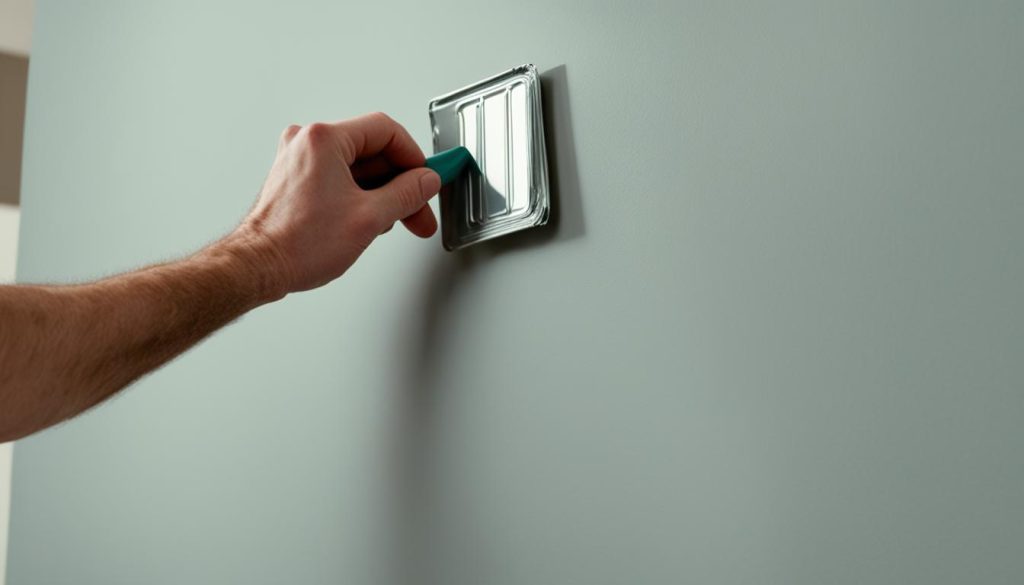
The Benefits of Repainting the Entire Wall
Touching up paint can quickly fix small blemishes. But, repainting the whole wall is better in busy areas or after fixes. Paints may look different in gloss or sheen, even with perfect color matches. This difference can easily make touch-ups stick out.
Choosing to repaint the wall fully will likely lead to a better, more even look. It makes the wall look tidy, especially in the corners. The new layer melds smoothly with the old one without any jarring differences.
Repainting it all stops those ugly patchy touch-up spots from forming. Instead, you get a consistent, fresh look all over. This approach works well for heavily damaged, worn walls or if you want a new vibe. In these cases, a full repaint gives you that perfect, flawless finish.

Conclusion
When choosing a paint color post-repair, our chief aim is a perfect and harmonious look. We should merge the new paint with the old one for a smooth change. It’s key to get advice from paint pros and think about the paint on the car fading over time.
For touch-ups, it might be best to repaint the entire wall. Doing this makes the repair barely noticeable and brings a neat, even look. By using these strategies and spending time picking the right color, we ensure a perfect repair. This keeps our ride looking good as new.
No matter the fix, placing high value on a flawless match matters a lot. Mixing the new paint well, seeking professional guidance, and maybe even repainting all ensure the best outcome. Let’s make well-thought-out decisions. This will give us a breathtaking finish, be it for our car or home environment!


